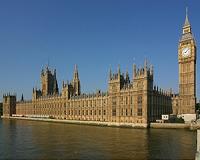 |
Palo Alto CA (SPX) Jul 02, 2010 One proposed emergency fix to halt global warming is to seed clouds over the ocean to make them more reflective, reducing the solar radiation absorbed by the Earth. But the scheme could also change global rainfall patterns, raising concerns of water shortages on land. A new study by the Carnegie Institution, in collaboration with the Indian Institute of Science, suggests that altered atmospheric circulation under the scheme in fact could increase monsoonal rains and cause the continents to become wetter, not drier, on average. Whitening clouds over the ocean to reflect sunlight is one of several geoengineering schemes proposed to counter global warming. The whitening would be accomplished by reducing the size of the water droplets making up the clouds. "Rain clouds, which have big droplets, tend to be grey and absorb sunlight, whereas clouds with smaller droplets tend to be white and fluffy and reflect more sunlight to space," says co-author Ken Caldeira of the Carnegie Institution's Department of Global Ecology. "In practice this could be done by shooting a fine spray of seawater high into the air, where the tiny salt particles would create condensation nucleii to form small cloud droplets." To test the climate consequences of doing this, Caldeira and his coauthors used a computer simulation of the global climate system in which atmospheric carbon dioxide concentrations were set at approximately twice that of present day. Cloud droplets over the oceans in the model were reduced in size to make the clouds more reflective. Clouds over land were unaltered. As expected, the whitened clouds reflected more solar radiation and offset the warming effect of the high carbon dioxide levels. What surprised the researchers, however, was that the model showed that the oceanic clouds caused the land surface to become cooler and wetter on average. In previous climate simulations diminishing solar radiation by geoengineering had reduced precipitation on land. "The drying of the continents has been a major concern with regard to geoengineering," says Caldeira. But in the model the runoff from the continents increased by 7.5% globally, with the effect being strongest in the tropics. The researchers concluded that the increased precipitation over land was driven by changes in air circulation, similar to the monsoonal pattern that determines rainfall in parts of Asia. "Monsoons occur when air masses over land are warmer than air masses over the ocean, and this draws in cool, moist air from over the ocean which then drops rain over the land," says Caldeira. In the simulations, the reflective oceanic clouds preferentially cooled the air over the oceans relative to land, setting up a monsoonal air flow. Caldeira stresses that their study, in which all marine clouds worldwide were uniformly whitened, cannot be used to predict the geographic patterns of rainfall that might develop as a result of geoengineering. "In real life, there are only certain parts of the ocean in which you could make the cloud droplets smaller," he says. Areas downwind of land, such as off the east coast of the United States, are already laden with particles of dust and pollution, so adding more particles will not significantly change cloud cover. "An actual deployment would be much patchier than in our study, and the result would therefore be somewhat different. But our basic result calls into question previous assumptions about the impact of this geoengineering scheme. It merits further investigation."
Share This Article With Planet Earth
Related Links Carnegie Institution Water News - Science, Technology and Politics
 Britain had driest start to year since 1929: forecasters
Britain had driest start to year since 1929: forecastersLondon (AFP) June 30, 2010 Britain has had the driest first six months of the year for more than eight decades, weather forecasters said Wednesday, amid warnings the lack of rain was putting pressure on water supplies. Official figures from the Met Office forecasting service showed the average rainfall across the country between January and June was 356.8 millimetres (14.05 inches). This made it the driest start ... read more |
|
| The content herein, unless otherwise known to be public domain, are Copyright 1995-2010 - SpaceDaily. AFP and UPI Wire Stories are copyright Agence France-Presse and United Press International. ESA Portal Reports are copyright European Space Agency. All NASA sourced material is public domain. Additional copyrights may apply in whole or part to other bona fide parties. Advertising does not imply endorsement,agreement or approval of any opinions, statements or information provided by SpaceDaily on any Web page published or hosted by SpaceDaily. Privacy Statement |